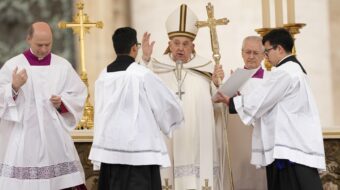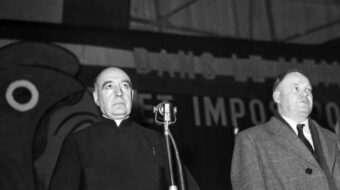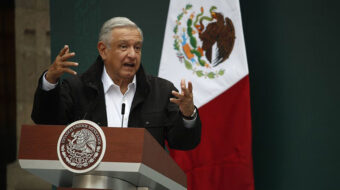
WEBSTER, Mass. – It’s a new New Order.
Catholics here and around the English-speaking world used for the first time the new version of its most standard Mass, Nov. 27, marking the first time since 1975 that the Church has made changes to the way English speakers celebrate the New Order Mass, which replaced the old style Latin-language Mass after the Second Vatican Council in the 1960s.
Archbishop Charles J. Chaput, of the Archdiocese of Philadelphia, wrote in a Nov. 20 pastoral letter, “The next few weeks will require careful attention as we sing and say new responses and prayers, and there may be some awkwardness and confusion. However, in a short time there will be again an ease to our participation in the celebration.”
According to Bishop Robert J. McManus, who leads the Diocese of Worcester, of which Webster is a part, “The new translation wonderfully recaptures the transcendence and majesty of God.”
The date of the change is important for Catholics, as it was the first day of Advent, which marks the beginning of the Christmas season.
“I felt strange,” said Edward, a parishioner here at the Sacred Heart of Jesus Parish. “I grew up saying, ‘And also with you.’ It’s not a big deal, but it was weird.”
He was referencing a change to the “sign of peace,” in which the priest and churchgoers wish each other goodwill, and then do the same amongst themselves, shaking hands with those closest to them. Up to now, the first well wisher would say, “Peace be with you.” The correct response would be, “And also with you.” Now, the correct response has been updated to: “And also with your spirit.”
While some have referred to the Church as having changed the Mass, it has not actually done so. Instead, it has changed the translation of the official Latin. The changes were introduced in the newest Missale Romanum, or Roman Missal, which gives directions as to how the service is to be carried out, including the correct words to say. Similar changes were introduced in all other languages as well, in order to bring greater conformity to congregations around the world who use the Latin Mass.
While many of the alterations seem small, the Vatican and Catholic bishops say that they are important clarifications. Msgr. Robert K. Johnson, director of the Office for Divine Worship of the Diocese of Worcester, Mass., explained the reasons in the diocese’s newspaper, Catholic Free Press. In the rush and excitement of the 1960s, when the Latin language, or Tridentine, mass was replaced by the New Order, which was to be celebrated in the local vernacular, the Vatican did not issue guidelines for translations. Further, the new Roman Missals were rushed into print, and errors crept in. While a new missal was introduced in 1975, many errors were left unfixed.
The Latin language, he continued, is able to express a great depth of meaning in fewer words than in other languages. As a consequence, translators had to decide whether to be brief or accurate. Unfortunately, said Msgr. Johnson, accuracy lost out.
Not only language was changed, however. There are new instructions on when to stand, when to observe silence, when to kneel or genuflect and when it is necessary to sing.
While some of the changes are minor, others have caused controversy among Catholics. Critics, including some bishops, say that the new translation is far less accessible to modern audiences. They note that the Nicene Creed, said during the mass as a statement of faith, now includes a particularly long word. Referring to Christ, the creed used to say, “one in being with the Father.” Now, however, the text reads, “consubstantial with the Father.”
Some priests have grumbled about having to learn a new prayer – with a 70-word sentence.
About 20,000 Catholics, including Catholic leaders, signed a petition asking the Vatican and the bishops to wait to change the mass, and to test the new version out before making it binding on the whole church.
Others see the new translation as adding, to use a phrase repeated by several bishops, “greater depth and beauty.” While, as would be expected, traditionalists have taken up this position, a number of others have as well.
“They had scholars who studied the translation, and we were out of line with what the actual Latin said,” said Sarah, another parishioner at Sacred Heart. “They fixed it. What’s wrong with that?”
“You know, I like to come to the Catholic churches, though I’m not a believer,” said one person after the Mass who did not want to be identified. “It’s just very beautiful, and I think that the new translation or Mass, whatever, it is more beautiful. It is very touching. It makes you feel like there could be a God.”
A few people have accused Pope Benedict the XVI of trying to push what is seen as a traditionalist agenda, even towards reversing the Second Vatican Council of the 1960s, which made numerous changes within the Catholic Church. Benedict is very much a traditionalist, and has made it easier for priests who want to do so to celebrate the pre-Vatican II Tridentine mass. However, the project for a new translation was originally announced by Pope John Paul II in 2001.
For a list of other changes, click here.
Photo: Bishop Joseph McManus, who leads the Diocese of Worcester, speaking with a parishioner outside Saint Paul’s Cathedral. Mike Benedetti // CC 2.0












Comments